The Renaissance, a period of profound cultural and intellectual rebirth, stands as a pivotal moment in history. Emerging in 14th century Italy, this transformative movement witnessed the rediscovery of ancient knowledge, a surge in artistic expression, and significant advancements in science and technology. From the illustrious works of Leonardo da Vinci and Michelangelo to the revolutionary impact of the printing press, the Renaissance spearheaded a shift towards humanism, individualism, and a renewed interest in the world and the human experience. This article delves into the origins and key elements that ignited this extraordinary period of development, exploration, and enlightenment.
Contents
- The Middle Ages and Medieval Scholarship
- The Italian Influence: Humanism and Classical Scholarship
- The Printing Press: Revolutionizing the Dissemination of Knowledge
- The Influence of the Byzantine Empire and Arabic Knowledge
- The Medici Family and Patronage of the Arts
- Scientific Discoveries and the Renaissance
- Artistic Renaissance: From Gothic to Naturalism
- Leonardo da Vinci: The Quintessential Renaissance Man
- Michelangelo and the Sistine Chapel: Celebrating the Human Form
- The Impact of the Renaissance on Religion and Church
- The Legacy of the Renaissance: Shaping Modern Civilization
- Conclusion
-
Frequently Asked Questions
- 1. What were the main characteristics of medieval scholarship?
- 2. How did medieval scholars reconcile faith and reason?
- 3. Were other fields of study neglected during the Middle Ages?
- 4. What role did monasteries play in medieval scholarship?
- 5. Which ancient philosophers were most influential during the Middle Ages?
- 6. What subjects could students study at medieval universities?
- 7. How did the preservation of ancient texts contribute to the Renaissance?
- 8. Were there any advancements in mathematics, astronomy, and medicine during the Middle Ages?
- 9. Did medieval scholars have access to knowledge from other cultures?
- 10. How did the emergence of universities impact medieval scholarship?
- References
-
Frequently Asked Questions
- 1. How did the Renaissance differ from the Middle Ages?
- 2. What role did the Medici family play in the Renaissance?
- 3. How did the printing press contribute to the Renaissance?
- 4. What impact did the Byzantine Empire and Arabic knowledge have on the Renaissance?
- 5. How did the Renaissance change the perception of art?
- 6. What were some significant scientific discoveries of the Renaissance?
- 7. Who was Leonardo da Vinci and why is he considered a quintessential Renaissance man?
- 8. How did Michelangelo contribute to the Renaissance?
- 9. What impact did the Renaissance have on religion and the Church?
- 10. How did the legacy of the Renaissance shape modern civilization?
- References
- Read More
The Middle Ages and Medieval Scholarship
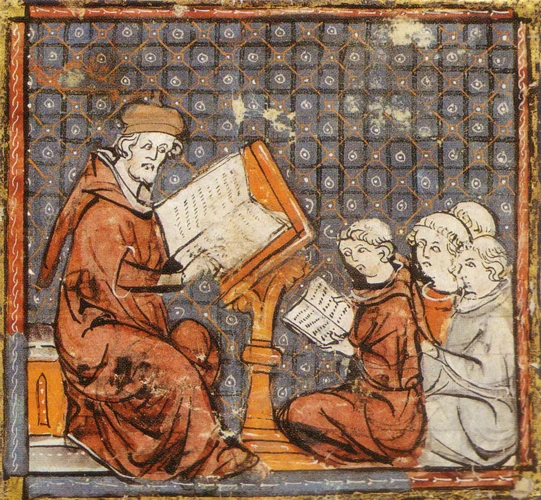
During the Middle Ages, a period spanning from the 5th to the 15th century, scholarship and intellectual pursuits were largely centered around the Church and religious institutions. Monasteries became centers of learning, preserving texts from antiquity and producing new works. The scholars, known as monks or scribes, meticulously transcribed manuscripts, ensuring the preservation of knowledge. Education was primarily focused on theology, philosophy, and the teachings of the Church.
Medieval scholarship heavily relied on the works of ancient philosophers and theologians such as Aristotle, Plato, and Saint Augustine. The works of these thinkers were often studied and interpreted through the lens of Christian theology, leading to the development of Scholasticism, a philosophical and theological system used to reconcile faith and reason.
One of the most significant contributions of medieval scholarship was the establishment of universities. These institutions, such as the University of Bologna and the University of Paris, were centers of higher education where students could study subjects ranging from law and medicine to theology and philosophy.
It’s important to note that while the Middle Ages placed a strong emphasis on religious scholarship, other fields of study were not entirely neglected. Mathematics, astronomy, and medicine also made advancements during this period thanks to the translation and preservation of classical works from Greek and Arabic sources.
Despite its limitations and focus on religious studies, medieval scholarship laid the groundwork for the intellectual curiosity and pursuit of knowledge that would later define the Renaissance. The rediscovery and reinterpretation of ancient texts would play a crucial role in the intellectual and cultural transformation that was about to unfold.
The Italian Influence: Humanism and Classical Scholarship
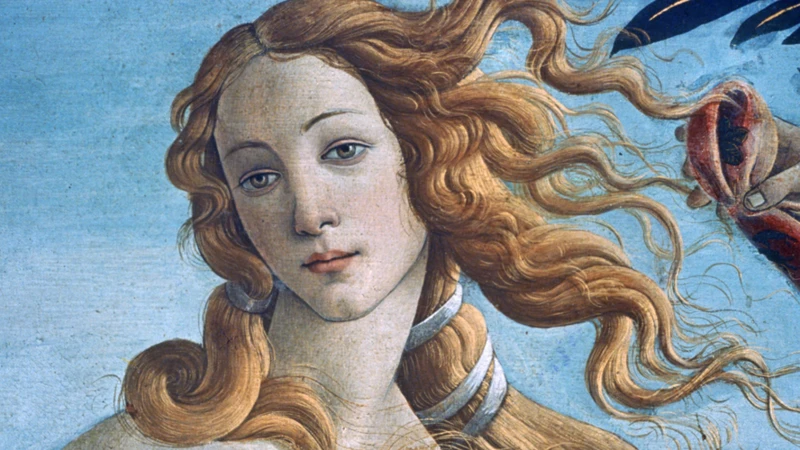
The Italian influence on the Renaissance cannot be overstated, particularly in regards to humanism and classical scholarship. Humanism, a philosophical movement that celebrated human potential and accomplishments, emerged as a response to the restrictive and solely religious focus of the Middle Ages. Humanist scholars, also known as “humanists,” placed a renewed emphasis on the study of classical literature, history, and philosophy.
Italian cities such as Florence, Rome, and Venice became thriving centers of intellectual and artistic activity, attracting scholars and thinkers from all over Europe. The wealthy and powerful Medici family of Florence played a significant role in patronizing the arts and supporting humanist scholars. The Medici sponsored the translation and preservation of classical works, making them more widely accessible.
Prominent humanists like Petrarch and Giovanni Pico della Mirandola championed the study of ancient texts, particularly those of the Greeks and Romans. They believed that understanding these texts would not only enrich individual knowledge but also provide a foundation for moral and intellectual development.
Classical scholarship flourished in Italy during this time, with scholars meticulously analyzing and deciphering ancient manuscripts. They delved into the works of philosophers such as Plato and Aristotle, as well as exploring the histories and writings of ancient civilizations. The study of Latin and Greek languages became essential for any aspiring humanist scholar.
This revival of classical scholarship had a profound impact on the Renaissance, as it fueled a desire for knowledge, critical thinking, and the exploration of new ideas. The Italian humanists laid the groundwork for the intellectual and cultural revolution that was about to unfold, sparking a renewed interest in literature, art, and scientific inquiry. Italy became the epicenter of the Renaissance movement, paving the way for the influential figures and transformative ideas that would shape the course of European history.celtic knot symbolism
The Printing Press: Revolutionizing the Dissemination of Knowledge
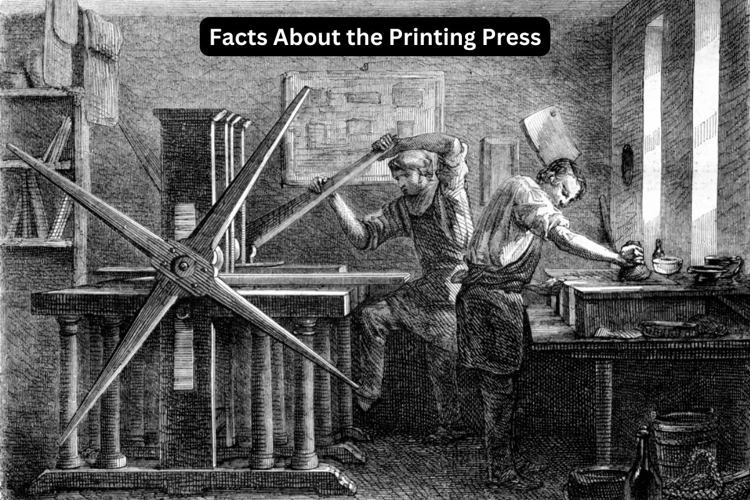
The invention of the printing press in the 15th century by Johannes Gutenberg revolutionized the dissemination of knowledge and played a pivotal role in the development of the Renaissance. Before the printing press, books were painstakingly copied by hand, making them expensive and scarce. Only the elite and religious institutions had access to written knowledge. However, Gutenberg’s invention made it possible to mass-produce books quickly and at a significantly lower cost.
Gutenberg’s printing press used movable type, which consisted of individual metal letters that could be rearranged to create different texts. This innovation allowed for the efficient production of books, pamphlets, and other printed materials. The first major work printed using the press was the Bible, known as the Gutenberg Bible, which increased the availability of biblical texts and enabled wider access to religious knowledge.
The impact of the printing press on the Renaissance cannot be understated. It facilitated the dissemination of ideas, leading to a democratization of knowledge. Books became more affordable and accessible, and a wider range of topics and subjects could be published. Scholars, scientists, and artists could now share their work with a larger audience, sparking intellectual exchange and fostering the spread of new ideas.
The printing press also played a crucial role in challenging the authority of the Church. With the availability of printed materials, including translations of the Bible, individuals were able to interpret religious texts for themselves, sparking theological debates and the questioning of established doctrines. This contributed to the formation of various religious movements and ultimately led to religious reformations such as the Protestant Reformation.
The impact of the printing press on intellectual and cultural development cannot be overstated. It paved the way for the Enlightenment and the Scientific Revolution, and it continues to shape the way knowledge is disseminated in the modern world. The printing press remains one of the most transformative inventions in human history, forever changing the way information is shared and preserved.
The Influence of the Byzantine Empire and Arabic Knowledge
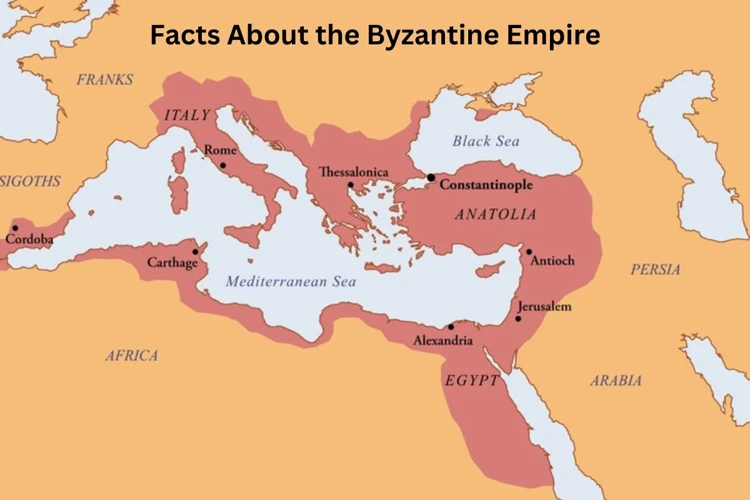
The Renaissance was greatly influenced by the knowledge and ideas that were preserved and transmitted by two major sources: the Byzantine Empire and the Arab world. When the Western Roman Empire fell in the 5th century, the Byzantine Empire, based in Constantinople, carried on the traditions of the Eastern Roman Empire. The Byzantines managed to preserve many ancient Greek texts and knowledge that had been lost in the West. These texts, including works by philosophers like Plato and Aristotle, were reintroduced to Western Europe through translations and scholarly exchanges during the Renaissance.
Arabic knowledge, particularly during the Islamic Golden Age, also played a significant role in shaping the Renaissance. Islamic scholars made important advancements in various fields, including medicine, mathematics, astronomy, and philosophy. Translations of Arabic texts, which had preserved and expanded upon the knowledge of ancient Greece and Rome, were brought to Europe. These Arabic works influenced European scholars, providing them with new ideas, theories, and scientific methods.
One notable figure in the transmission of Arabic knowledge during the Renaissance was the 12th-century translator Gerard of Cremona. He translated numerous Arabic works into Latin, including those by the famous Islamic philosopher and scientist Avicenna. Gerard’s translations allowed European scholars to access the sophisticated medical and philosophical treatises of the Arab world.
The influence of the Byzantine Empire and Arabic knowledge was transformative for the Renaissance. The reintroduction of ancient Greek texts and the adoption of Arabic advancements in various fields fueled a renewed interest in learning, discovery, and the exploration of new ideas. These influences opened up new paths for scholarship and paved the way for the innovative intellectual and artistic achievements that would define the era.
The Medici Family and Patronage of the Arts
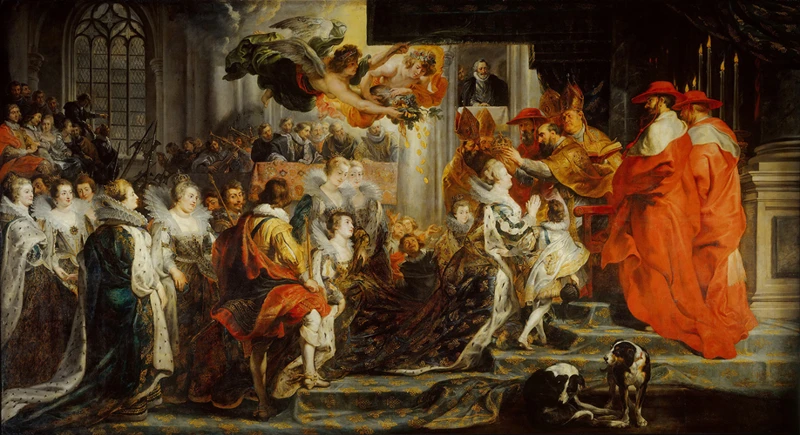
The Medici family, one of the most influential dynasties of the Renaissance, played a critical role in the patronage of the arts, nurturing and supporting the flourishing artistic expressions of the time. As wealthy bankers and merchants, the Medici family amassed immense wealth and used their resources to commission and sponsor works of art and architecture throughout Florence and beyond.
Cosimo de’ Medici, the patriarch of the family, was an avid patron of the arts, recognizing the power of art in promoting social and political prestige. He established the Medici Palace as a hub for intellectuals, artists, and scholars, creating an environment conducive to artistic innovation and exchange of ideas.
Under the Medici’s patronage, artists such as Donatello, Brunelleschi, and Botticelli thrived, pushing the boundaries of artistic conventions and introducing new techniques and styles. Their works celebrated the beauty of the human form, revived classical themes, and incorporated naturalistic elements, marking a departure from the rigid and symbolic art of the Middle Ages.
Lorenzo de’ Medici, also known as Lorenzo the Magnificent, continued the family’s support of the arts. He fostered the development of humanistic studies by establishing a Platonic Academy in Florence, where scholars could engage in intellectual discourse and explore the works of ancient philosophers. The Medici family’s patronage not only provided financial support but also created an atmosphere that encouraged artistic experimentation and creativity.
Artists under Medici patronage were able to focus on their craft without the burden of financial concerns, enabling them to produce masterpieces that continue to captivate audiences to this day. Through their support and promotion of the arts, the Medici family not only contributed to the Renaissance but also solidified Florence as a cultural epicenter and inspired future generations to appreciate and value artistic expression.
The legacy of the Medici family’s patronage of the arts remains evident in Florence today, with notable landmarks such as the Medici Chapel, Palazzo Medici Riccardi, and the Uffizi Gallery standing as testaments to their profound influence. The Medici family’s commitment to nurturing artistic talent left an indelible mark on the Renaissance, shaping the course of art history and forever cementing their place as unparalleled patrons of the arts.
Scientific Discoveries and the Renaissance
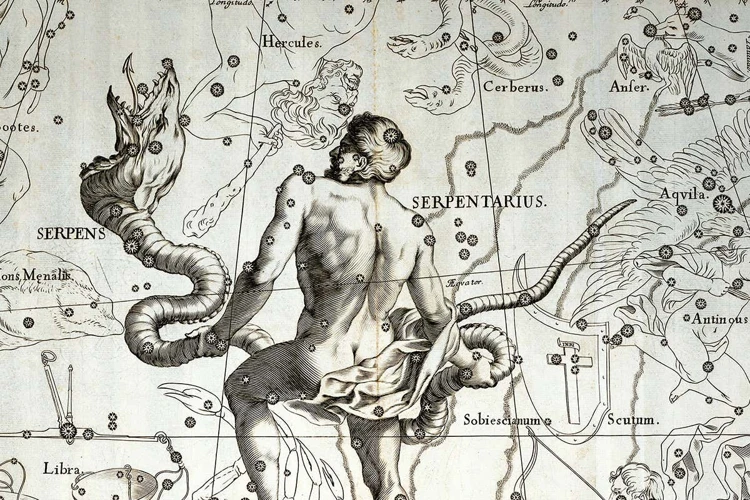
Scientific discoveries during the Renaissance period revolutionized the way people understood the world around them. With a renewed emphasis on observation and experimentation, scholars and scientists began to challenge long-held beliefs and explore new frontiers of knowledge.
1. Advancements in Astronomy: The work of Nicolaus Copernicus challenged the geocentric model of the universe, positing the heliocentric theory that the Earth revolves around the Sun. This groundbreaking idea revolutionized the field of astronomy and laid the foundation for later discoveries by astronomers such as Galileo Galilei and Johannes Kepler.
2. Anatomy and Human Dissection: Renaissance scientists, including Leonardo da Vinci, made significant strides in understanding human anatomy through meticulous dissections and detailed anatomical drawings. This improved understanding of the human body led to advancements in medical knowledge and laid the groundwork for modern medical practices.
3. Development of the Scientific Method: During the Renaissance, the scientific method began to emerge as a systematic approach to conducting experiments and acquiring knowledge. Scholars like Francis Bacon emphasized the importance of empirical observation, experimentation, and the formulation of hypotheses, paving the way for the scientific revolution that was to follow.
4. Exploration and Geographic Discoveries: The Renaissance witnessed a period of exploration and discovery, fueled by advancements in navigational tools and shipbuilding. Explorers such as Christopher Columbus, Ferdinand Magellan, and Vasco da Gama embarked on ambitious journeys, leading to the discovery of new lands, trading routes, and the expansion of global knowledge.
5. Mathematical Innovations: Mathematicians of the Renaissance, such as Leonardo da Vinci, Niccolò Tartaglia, and Gerolamo Cardano, made significant contributions to the field. Algebra, geometry, and calculus saw notable developments during this period, which had far-reaching implications for future scientific advancements.
The scientific discoveries of the Renaissance played a pivotal role in breaking away from the religious and philosophical dogmas of the Middle Ages. These advancements laid the foundation for the scientific revolution that would shape the modern world and our understanding of the natural laws governing the universe. The spirit of inquiry and the commitment to empirical observation that emerged during this time continue to influence scientific pursuits to this day.
Artistic Renaissance: From Gothic to Naturalism
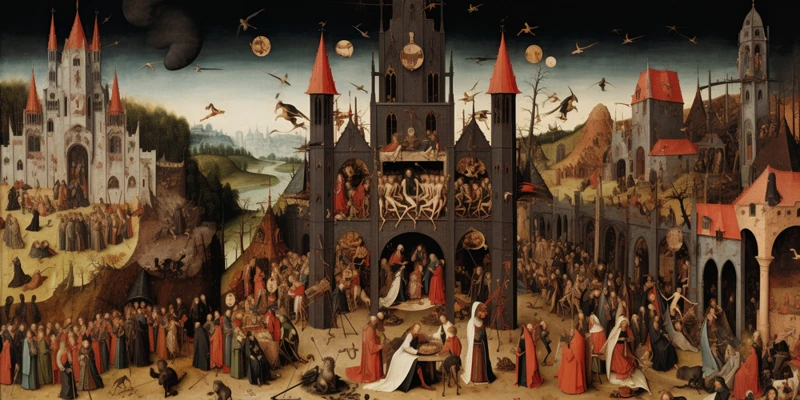
The artistic Renaissance marked a radical departure from the dominant Gothic style of the Middle Ages, introducing a renewed focus on naturalism, perspective, and individual expression. Gothic art, characterized by its emphasis on ornate details and towering architecture, was gradually replaced by a more human-centered approach. With the growing interest in ancient Greek and Roman art, artists sought to capture the beauty and complexity of the natural world.
During the Renaissance, artists began studying anatomy, mathematics, and the principles of light and shadow to create more realistic and lifelike representations. They used techniques such as chiaroscuro (contrasting light and dark), sfumato (blurring boundaries), and perspective to give depth and three-dimensionality to their artwork.
One notable aspect of the artistic Renaissance was the rise of individual artists as highly regarded figures. Artists such as Leonardo da Vinci, Michelangelo, and Raphael gained prominence and recognition for their unique styles and innovative approaches to art. They were celebrated for their ability to infuse emotion and realism into their depictions of the human form.
Religious themes continued to dominate Renaissance art; however, the portrayal of religious figures became more humanistic and relatable. Artists depicted biblical scenes and saints in a way that emphasized their humanity and the intensity of their emotions.
As the shift from Gothic to naturalistic art took hold, artists also began exploring secular subjects. Portraiture became increasingly popular as a way to celebrate individuality and status. Landscape painting, still life, and genre scenes depicting everyday life also gained prominence during this period.
The artistic Renaissance challenged traditional artistic conventions and paved the way for the development of new techniques and styles that would shape the future of art. It was a time of experimentation, innovation, and a renewed appreciation for the beauty of the natural world and the human form.
[Internal link: /the-influence-of-ophiuchus-musicians/]
Leonardo da Vinci: The Quintessential Renaissance Man
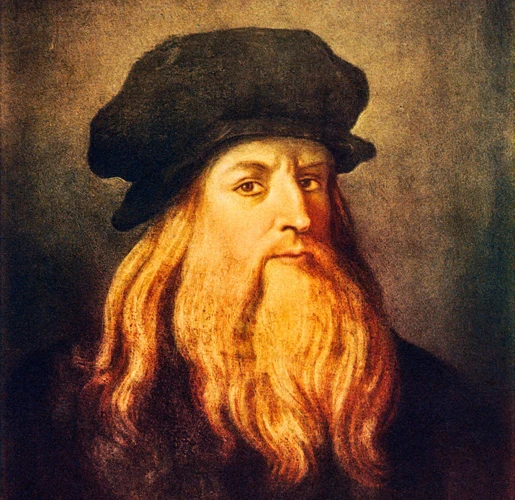
Leonardo da Vinci, often revered as the quintessential Renaissance man, epitomized the intellectual, artistic, and scientific curiosity that characterized the era. Born in 1452 in Vinci, Italy, da Vinci possessed a diverse range of talents and interests that encompassed art, architecture, engineering, anatomy, and botany.
As an artist, da Vinci revolutionized the techniques and style of his time, striving for realism and naturalism in his paintings. His most famous work, the Mona Lisa, showcases his mastery of capturing subtle expressions and conveying depth in a portrait. He also painted The Last Supper, a monumental fresco that demonstrated his skill in composition and storytelling.
Beyond his artistic achievements, da Vinci’s scientific and engineering prowess was equally remarkable. He meticulously studied various fields, including anatomy, astronomy, and mechanical engineering, leaving behind detailed notebooks filled with sketches and observations. His study of human anatomy, through dissections of cadavers, contributed significantly to a better understanding of the human body’s structure and function.
Da Vinci’s innovations extended to engineering projects as well. He conceptualized designs for flying machines, diving suits, and war machines, demonstrating his forward-thinking approach to invention and exploration. Although many of his ideas remained unrealized during his lifetime, they served as a foundation for future innovations and advancements.
Da Vinci’s insatiable curiosity led him to explore the natural world. He studied and documented the behaviors of animals, dissected plants to understand their structure, and made extensive scientific observations. His interest in geology and the Earth’s formations also led him to study and document fossils, contributing to the emerging field of paleontology.
Throughout his life, da Vinci’s commitment to observation, experimentation, and interdisciplinary learning embodied the spirit of the Renaissance. His ability to seamlessly merge art and science, combined with his relentless pursuit of knowledge, made him an iconic figure of the era.
Leonardo da Vinci’s immense contributions to art and science continue to inspire and influence generations of artists, scientists, and scholars. His legacy serves as a testament to the power of intellectual curiosity and the boundless potential of the human mind.
Michelangelo and the Sistine Chapel: Celebrating the Human Form
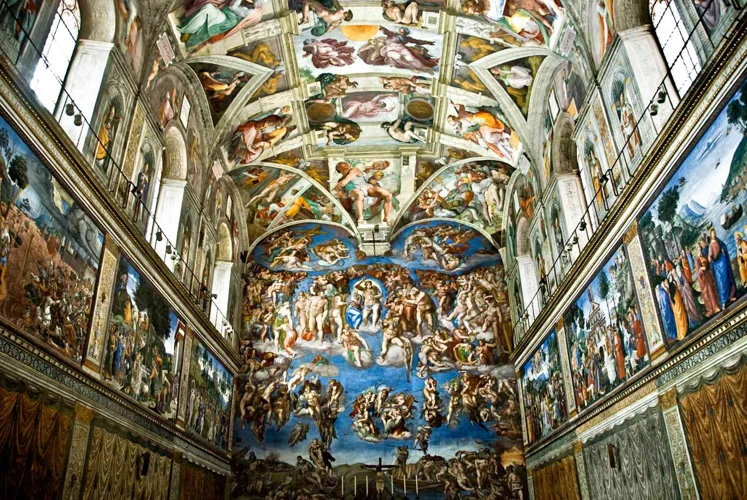
Michelangelo, one of the most renowned artists of the Renaissance, made an indelible mark on the art world with his masterpiece in the Sistine Chapel. Commissioned by Pope Julius II, Michelangelo spent four arduous years meticulously painting the ceiling of the chapel, creating a breathtaking fresco that surpassed all expectations. The Sistine Chapel ceiling, measuring over 5,000 square feet, showcases Michelangelo’s unparalleled talent for capturing the beauty and complexity of the human form.
Using his exceptional skill in anatomy and his deep understanding of human proportions, Michelangelo depicted biblical scenes and figures in a way that exuded realism and emotional depth. The frescoes include iconic depictions such as the Creation of Adam, Adam and Eve in the Garden of Eden, and the Last Judgment. Every muscle, sinew, and wrinkle in his figures conveys a sense of life and movement, leaving viewers in awe of the sheer mastery of his art.
What makes Michelangelo’s work in the Sistine Chapel truly remarkable is his ability to celebrate the human form while infusing it with a sense of divinity. He presented the human body as a vessel capable of profound grace and beauty, connecting humanity to the divine. The composition, color palette, and attention to detail in each figure reflect Michelangelo’s deep reverence for the human form and his desire to elevate it to a realm beyond the earthly.
The impact of Michelangelo’s work in the Sistine Chapel cannot be overstated. It set a new standard for artistic excellence and became a source of inspiration for countless artists who followed. His portrayal of the human figure as the pinnacle of creation and a conduit for expression profoundly influenced the art world, shifting the focus from the divine to the earthly and humanistic. Today, the Sistine Chapel stands as a testament to Michelangelo’s genius and his enduring legacy as one of the greatest artists of all time.
The Impact of the Renaissance on Religion and Church
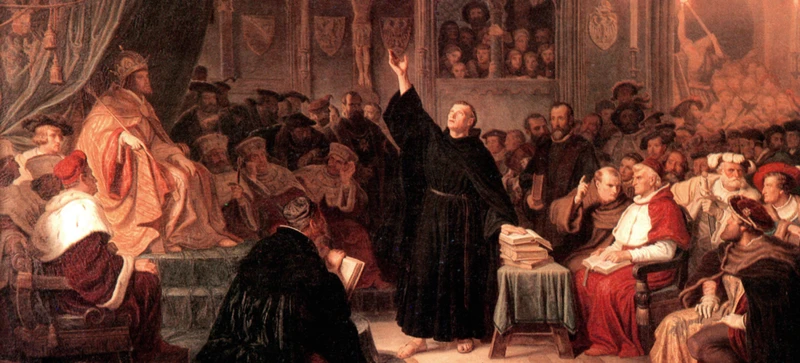
The Renaissance brought about significant changes in the realm of religion and the Church. The period saw a shift in religious attitudes, challenging the authority of the Catholic Church and paving the way for the Protestant Reformation. The exploration of new ideas and the questioning of traditional beliefs led to religious reform and the emergence of new Christian denominations.
One of the key figures in the religious landscape of the Renaissance was Martin Luther. In 1517, Luther famously sparked the Reformation by publishing his Ninety-Five Theses, critiquing the practices and teachings of the Catholic Church. This act of defiance set in motion a wave of religious reform across Europe, with Luther advocating for the principles of faith alone and the authority of Scripture.
The Renaissance also saw the rise of Humanism, a movement that emphasized the importance of individualism, reason, and a direct relationship with God. Humanist thinkers, such as Erasmus of Rotterdam, sought to reform the Church from within through intellectual and moral renewal. They advocated for a return to the original texts of the Bible and placed a greater focus on personal piety and moral responsibility.
Art played a significant role in shaping religious expression during the Renaissance. Artists, influenced by newfound humanist ideals, portrayed biblical scenes and religious figures with a renewed sense of realism and emotion. Works such as Leonardo da Vinci’s “The Last Supper” and Michelangelo’s “The Creation of Adam” captured the essence of religious themes while showcasing the artist’s mastery of the human form.
The Reformation and the subsequent spread of Protestantism had profound political and social implications as well. Religious conflicts erupted throughout Europe, leading to wars and the fragmentation of Christianity. The authority of the Catholic Church was challenged, and the power of monarchs and individual states began to overshadow that of the papacy.
Ultimately, the impact of the Renaissance on religion and the Church was a complex and transformative process. It ushered in an era of religious reform, intellectual exploration, and artistic expression that would shape the religious landscape for centuries to come.
The Legacy of the Renaissance: Shaping Modern Civilization
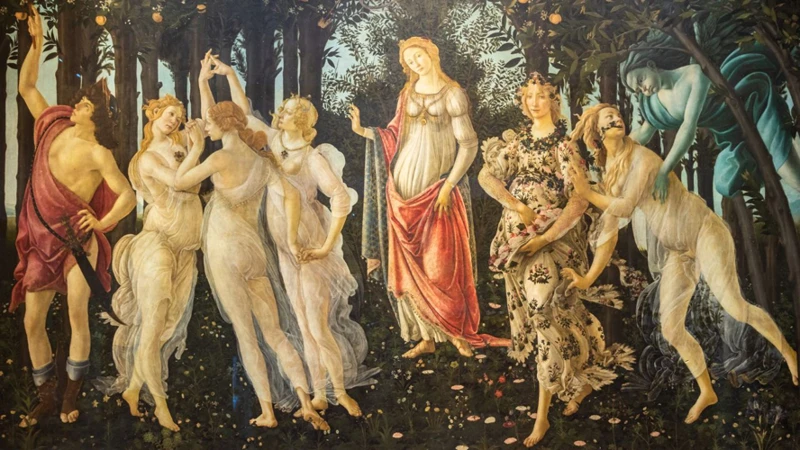
The legacy of the Renaissance extends far beyond the borders of 15th and 16th century Europe, shaping the foundations of modern civilization. The intellectual, artistic, and scientific advancements made during this era laid the groundwork for the cultural, social, and political transformations that continue to influence our world today.
One of the key legacies of the Renaissance is its emphasis on humanism and the celebration of human potential. Humanist ideas, which emphasized the worth, dignity, and capabilities of individuals, challenged the previously dominant theological worldview of the Middle Ages. The Renaissance gave rise to a new sense of individualism, encouraging people to explore their own unique talents and passions. This shift in mindset has had lasting effects, influencing the concept of human rights, the pursuit of personal fulfillment, and the notion of self-expression.
The Renaissance also revolutionized the field of science and led to significant advancements in our understanding of the natural world. Figures such as Galileo Galilei and Nicolaus Copernicus challenged the geocentric model of the universe, paving the way for modern astronomy and a new understanding of our place in the cosmos. The scientific method, with its emphasis on observation, experimentation, and evidence-based reasoning, was developed during this period and continues to be the foundation of scientific inquiry today.
Artistically, the Renaissance marked a departure from the Gothic style of the Middle Ages and embraced naturalism and classical influences. Artists like Leonardo da Vinci, Michelangelo, and Raphael pushed the boundaries of artistic expression, creating masterpieces that captured the beauty and complexity of the human form. Their lasting impact can be seen in the works of countless artists throughout history and in our appreciation for art as an integral part of human culture.
The Renaissance had profound effects on education, with the establishment of new educational institutions and the expansion of knowledge through the printing press. The dissemination of ideas and information became more accessible, leading to a rise in literacy rates and a democratization of knowledge. This democratization was a catalyst for social change, providing individuals with the tools to challenge authority, question traditional beliefs, and advocate for their rights.
The legacy of the Renaissance is a testament to the power of human innovation and creativity. Its influence can be seen in the ideals of individualism, the pursuit of knowledge, artistic expression, scientific inquiry, and the ongoing quest for progress. The Renaissance not only transformed the world of its time but also shaped the course of history, leaving an indelible mark on modern civilization.
Conclusion
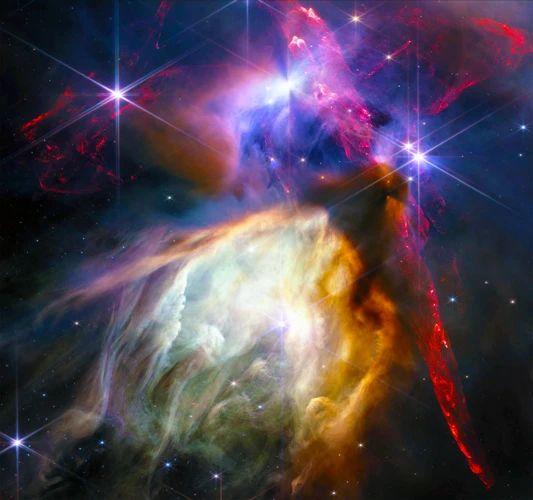
In conclusion, the Renaissance stands as a turning point in human history, representing a convergence of intellectual, artistic, and scientific advancements. It was a period of remarkable transformation that saw the rediscovery of ancient knowledge, the rise of humanism and individualism, and the flourishing of artistic expression. The Renaissance challenged the traditional norms and beliefs of the Middle Ages, paving the way for a more curious, inquisitive, and secular society.
The impact of the Renaissance on various fields cannot be overstated. It not only revolutionized art and literature, but also reshaped scientific inquiry and exploration. The Renaissance thinkers sought to understand the world through observation, experimentation, and logical reasoning, establishing a foundation for modern scientific inquiry.
Additionally, the Renaissance had lasting effects on religion and the Church. The Reformation movement, sparked by influential figures such as Martin Luther and John Calvin, challenged the authority of the Catholic Church and led to the establishment of Protestantism. The upheaval of religious institutions and the questioning of traditional beliefs paved the way for religious reform and the rise of different interpretations of Christianity.
The legacy of the Renaissance continues to shape modern civilization. Its emphasis on critical thinking and individualism laid the groundwork for the Enlightenment period, which further propelled scientific and philosophical advancements. The Renaissance also cultivated a renewed appreciation for the arts, fostering creativity and inspiring generations of artists, architects, and writers.
In conclusion, the Renaissance was a profound and transformative period that revived the intellectual and artistic pursuits of ancient civilizations while catalyzing new ideas and approaches. It marked a shift from the conservatism and religious dominance of the Middle Ages to a period of exploration, experimentation, and discovery that continues to resonate with us today. To truly understand the magnitude of the Renaissance, it is necessary to explore the various components and individuals that contributed to this remarkable period of human history. [Link: Exploring Unique Qualities of Ophiuchus](/exploring-unique-qualities-ophiuchus/)
Frequently Asked Questions
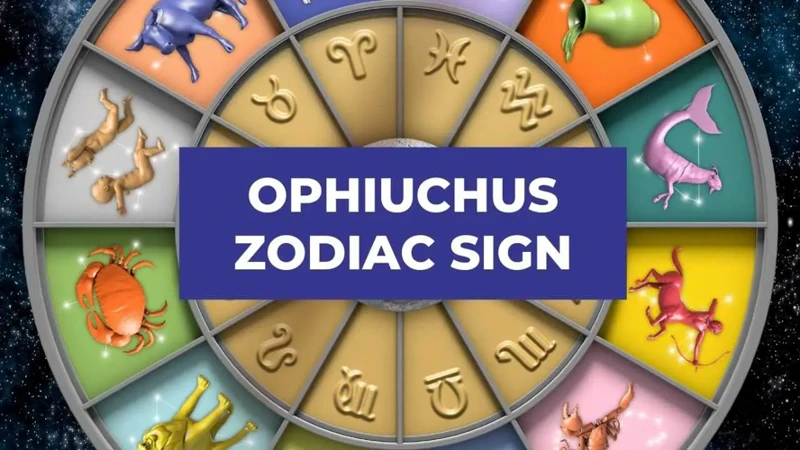
1. What were the main characteristics of medieval scholarship?
Medieval scholarship was primarily focused on religious studies, with a strong emphasis on theology, philosophy, and the teachings of the Church. Monastic centers preserved and transcribed ancient texts, and universities emerged as centers of higher education.
2. How did medieval scholars reconcile faith and reason?
Medieval scholars developed a philosophical and theological system known as Scholasticism, which aimed to reconcile faith and reason. They studied the works of ancient philosophers and interpreted them through the lens of Christian theology.
3. Were other fields of study neglected during the Middle Ages?
While religious studies were prioritized, other fields such as mathematics, astronomy, and medicine also made advancements during the Middle Ages. Translations of Greek and Arabic texts contributed to these advancements.
4. What role did monasteries play in medieval scholarship?
Monasteries were central to medieval scholarship. They served as centers of learning, preserving ancient texts and producing new works. Monks and scribes meticulously transcribed manuscripts, ensuring the preservation of knowledge.
5. Which ancient philosophers were most influential during the Middle Ages?
Ancient philosophers such as Aristotle, Plato, and Saint Augustine were highly influential during the Middle Ages. Their works were extensively studied and interpreted through a Christian theological framework.
6. What subjects could students study at medieval universities?
Medieval universities offered a range of subjects for study, including law, medicine, theology, philosophy, and the liberal arts. These institutions provided higher education for students seeking knowledge outside of the monastic setting.
7. How did the preservation of ancient texts contribute to the Renaissance?
The preservation of ancient texts during the Middle Ages laid the foundation for the Renaissance. These texts, once rediscovered and reinterpreted, fueled intellectual curiosity and inspired new modes of thinking and exploration.
8. Were there any advancements in mathematics, astronomy, and medicine during the Middle Ages?
Yes, advancements were made in these fields during the Middle Ages due to the translation, preservation, and further development of Greek and Arabic works. Mathematics saw progress through the works of scholars like Fibonacci, astronomy through astronomers like Claudius Ptolemy, and medicine through the contributions of figures such as Avicenna.
9. Did medieval scholars have access to knowledge from other cultures?
Yes, medieval scholars had access to knowledge from other cultures. Through the translation and transmission of ancient Greek and Arabic texts, scholars gained insights from different intellectual traditions, contributing to the expansion of knowledge during the Middle Ages.
10. How did the emergence of universities impact medieval scholarship?
The establishment of universities during the Middle Ages provided a more structured and formalized approach to education. It allowed for an exchange of ideas and the development of specialized fields of study, fostering intellectual growth and contributing to the overall advancement of knowledge.
References
Frequently Asked Questions

1. How did the Renaissance differ from the Middle Ages?
The Renaissance marked a significant departure from the Middle Ages. It was characterized by a revival of intellectual and artistic pursuits, a shift towards humanism, and a renewed interest in the classical works of Greece and Rome.
2. What role did the Medici family play in the Renaissance?
The Medici family, particularly Cosimo de’ Medici and Lorenzo de’ Medici, played a crucial role in patronizing and supporting artists, scholars, and architects. Their patronage helped foster an environment conducive to the flourishing of art, literature, and scientific advancements.
3. How did the printing press contribute to the Renaissance?
The invention of the printing press by Johannes Gutenberg revolutionized the dissemination of knowledge during the Renaissance. It enabled the mass production of books and the spread of ideas, leading to increased literacy rates and a greater exchange of intellectual and scientific discoveries.
4. What impact did the Byzantine Empire and Arabic knowledge have on the Renaissance?
The Byzantine Empire preserved and transmitted the knowledge of the ancient Greeks, which became a major source of inspiration for Renaissance scholars. The translation of Arabic texts into Latin also introduced new ideas and scientific knowledge, contributing to the intellectual flourishing of the era.
5. How did the Renaissance change the perception of art?
The Renaissance marked a shift from the Gothic style of art to a more naturalistic approach. Artists during this period focused on portraying the beauty of the human form and creating realistic and proportionate representations. This departure from the religious symbolism of the Middle Ages greatly transformed the perception and appreciation of art.
6. What were some significant scientific discoveries of the Renaissance?
The Renaissance witnessed several groundbreaking scientific discoveries. Nicolaus Copernicus proposed the heliocentric model of the universe, challenging the geocentric view. Galileo Galilei made significant advancements in physics and astronomy, while Leonardo da Vinci’s observations in anatomy paved the way for modern medical understanding.
7. Who was Leonardo da Vinci and why is he considered a quintessential Renaissance man?
Leonardo da Vinci was an Italian polymath who excelled in various fields, including painting, sculpture, architecture, engineering, and anatomy. His diverse talents and insatiable curiosity epitomize the ideal of a Renaissance man, representing the multidisciplinary approach to knowledge and creativity during the era.
8. How did Michelangelo contribute to the Renaissance?
Michelangelo was a renowned sculptor, painter, and architect whose works, such as the Sistine Chapel ceiling frescoes, are regarded as masterpieces of the Renaissance. His focus on depicting the idealized human form and his ability to capture the essence of human emotions greatly contributed to the artistic achievements of the period.
9. What impact did the Renaissance have on religion and the Church?
The Renaissance challenged the dominance of the Catholic Church and its authority. The rise of humanism and the scrutiny of religious practices led to the Reformation, which resulted in the emergence of Protestantism and the splintering of Christianity. The exploration of new ideas and the questioning of traditional beliefs reshaped religious thought and practices.
10. How did the legacy of the Renaissance shape modern civilization?
The Renaissance laid the foundations for modern civilization in numerous ways. It fueled the Age of Exploration, leading to the discovery of new lands and the expansion of knowledge. The emphasis on humanism, individualism, and secularism during the Renaissance also influenced the political, social, and cultural developments that followed, shaping the world as we know it today.
References
- What Was the Renaissance — Definition, History & Artists
- What is the Renaissance? | RMN
- Renaissance Period: Timeline, Art & Facts






